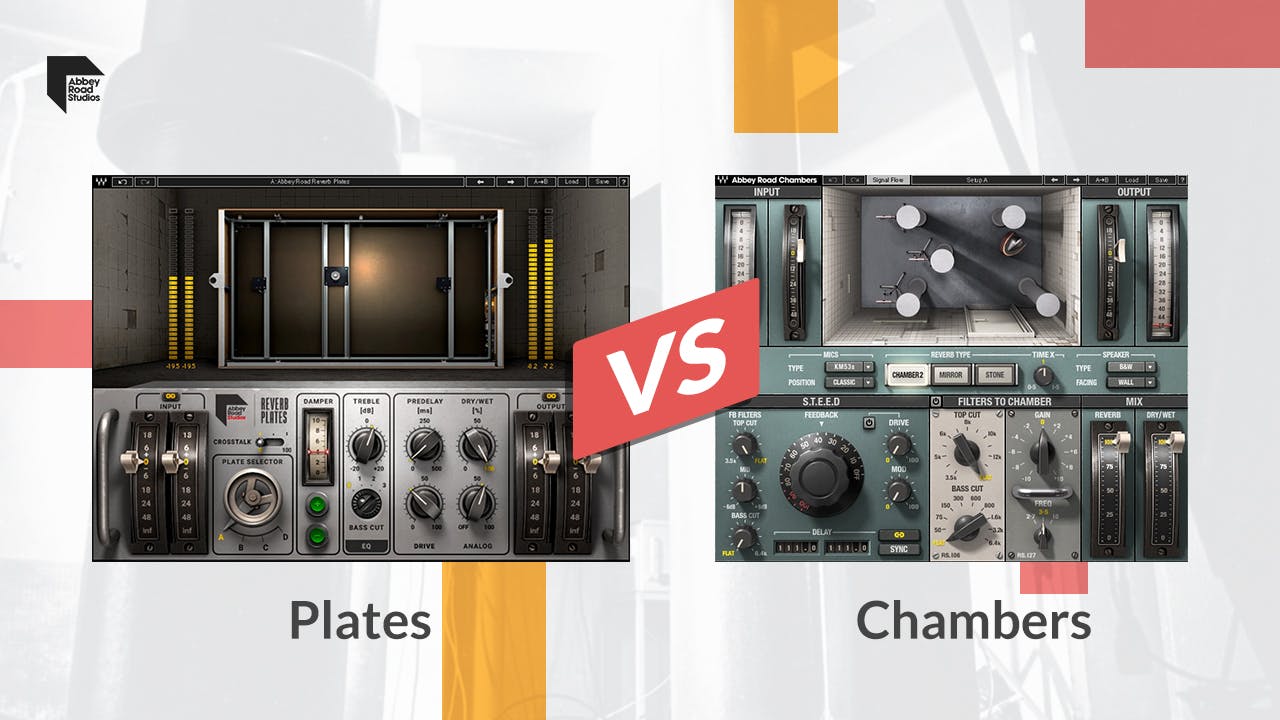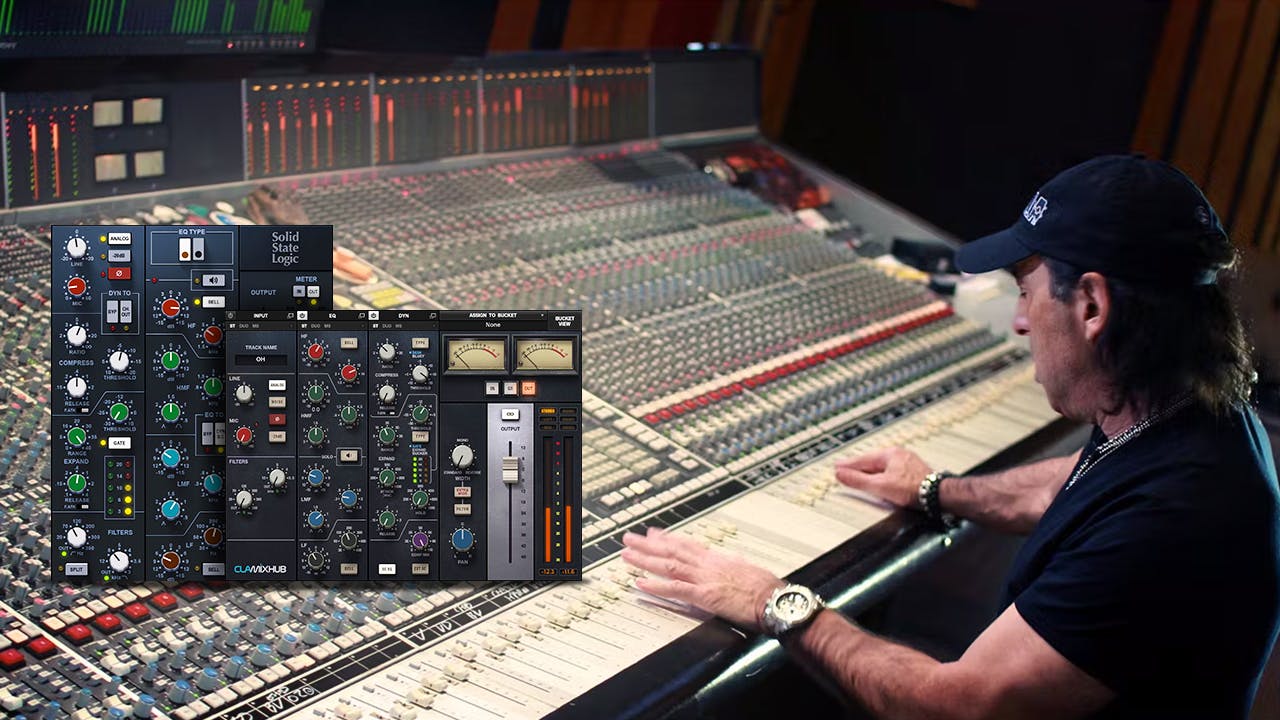Tape Emulation Plugins Compared: J37 vs. Kramer Master Tape
Abbey Road J37 and Kramer Master Tape give the authentic sound of two classic tape recorders—without the drama of maintenance, variable tape quality, or high tape costs. Dive into the sound and differences of the two emulations.
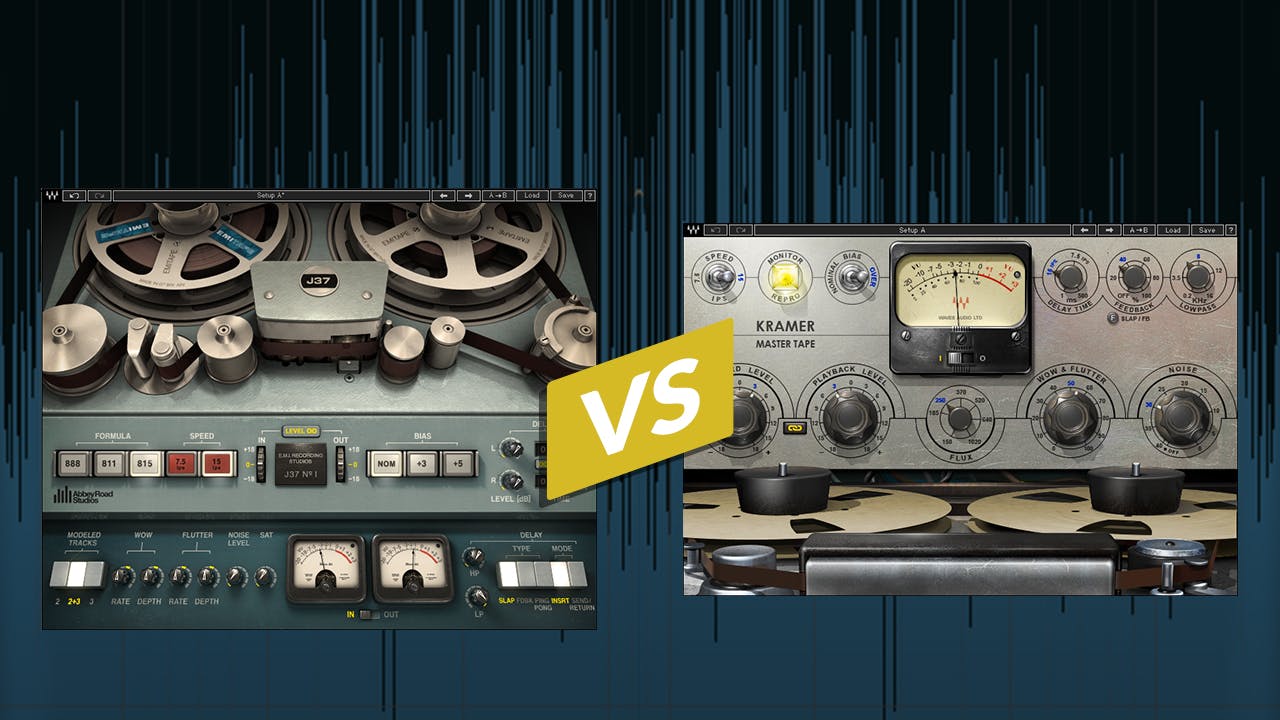
By Craig Anderton
Full disclosure: I didn’t like working with tape. It stretched, self-erased high frequencies the more you played it, required constant maintenance, needed noise reduction (which had its own issues, unless you were slamming it with punk rock), cost a lot, depended on semi-subjective bias and EQ settings, was tough to store, the quality varied and of course...rewind and fast forward times. Let’s not even discuss the cost of alignment tapes, re-lapping heads, or doing window splices in multitrack tape (and if you don’t know what a “window splice” is, be thankful you missed that part of audio history).
But the sound of tape was unique. It combined harmonic distortion, limiting, transient softening, and a low-frequency “bump” that helped lift the bass. What’s more, the harmonic distortion was dynamic—it tracked input levels by being more distorted at a peak’s onset, and less distorted as the signal decayed. Depending on the recorder, the tape and the bias, distortion could become audible at input levels as low as -10 dB, or even lower. Think of tape as a mechanical limiter that knew when, and how, to distort as it limited.
This is why even though I didn’t like working with tape, I like working with tape emulation: it emulates the sound of tape running on a perfectly aligned tape recorder, outfitted with brand-new tape heads, using virtual tape—whose virtual production run never has quality control problems! Waves offers two tape emulation plugins: the J37, modeled after the modified Studer 4-track deck used in Abbey Road Studios (most famously for the Beatles’ Sgt. Pepper’s Lonely Hearts Club Band), and the Kramer Master Tape, which models Ampex’s vintage machines. Having been raised on tape, I can vouch for the plugins’ ability to reproduce the sound of tape, as well as recognize what makes each of them different.
The Similarities
Both plugins can choose between 7.5 and 15 IPS (inches per second) tape speeds. 15 IPS places the bass bump well within the audible range and gives a better high-frequency response with less distortion. However, 7.5 IPS can work well with lower-frequency sources, like kick and bass, if you don’t need the bass bump. Both plugins also allow for bias adjustments, although the J37 is the more flexible of the two.
With either plugin, you need to be careful with input levels. Remember that VU meters show average levels and that the virtual tape is soft-clipping the transients that normally register on peak meters. You can overload the virtual tape for effect but start with more conservative settings until you get a feel for how the plugins react to level.
Abbey Road J37 Tape
This is the more sophisticated of the two plugins—there are more options for altering the sound, including three different tape formulation “flavors” (Fig. 1). However, depending on your application, that doesn’t necessarily mean the J37 is better than the Kramer Master Tape.
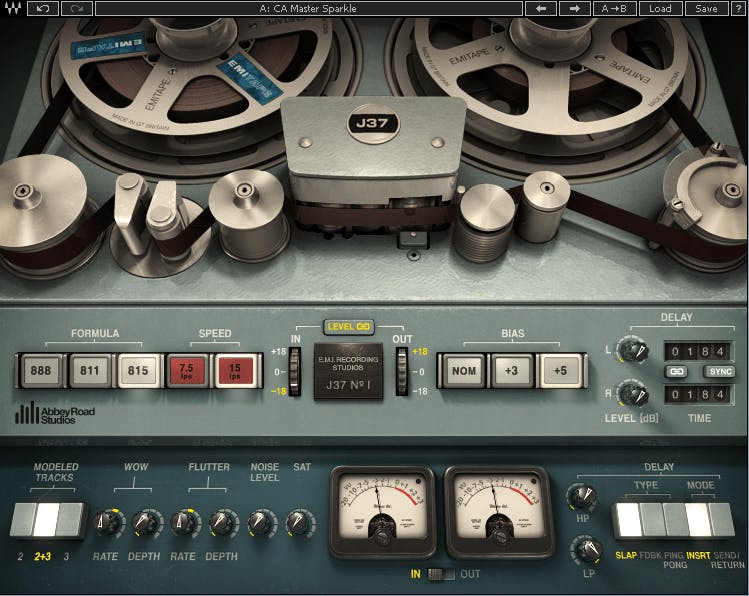
Figure 1: The J37 settings used for the audio example of processing a master tape. The tape formula buttons are to the left of the upper panel.
Chronologically, the EMI 888 tape formulation came first. Its high-frequency distortion makes full mixes jump out, with presence and a wide image. When people think of “that tape sound,” this is probably the kind of tone they have in mind. The EMI 811 formulation was next; it cut back on the distortion a bit, which opens up more clarity for the high frequencies. The EMI 815 formulation benefited from refinements that occurred over the years and delivers a rounder bass with natural highs.
At 15 IPS the bias options are normal, +3 and +5. If you turn up the noise level control with no input signal, bias changes are obvious—more bias equals duller sound (note that at 7.5 IPS, the 888 and 811 offer only the normal bias). However, when feeding in an external sine wave for testing, the increase in distortion is greater at +3 dB than +5 dB. This may be due to modeling other factors in addition to bias by itself.
Although the 888 is considered the “dirtiest” of the three tape formulations, I like it on rock stereo masters and music with acoustic elements, like acoustic guitar and hand percussion. It adds a certain brightness that makes the music a bit larger than life. With highly electronic music, which already pushes out a lot of highs and sometimes exaggerates imaging, I prefer the 815 formulation for its smooth, more controlled sound. The 811 splits the difference; a good application is on individual tracks, where you want to add character to an instrument like piano, but in a subtler way that the 888 formulation provides.
The way the J37 handles biasing indicates the level of modeling detail. With the 888 tape, the nom and +5 settings act as you’d expect, but the +3 setting has some extra high-frequency pre-emphasis. With the 811 tape, the nom and +3 dB settings also act as expected, but this time, the +5 dB has some added pre-emphasis to compensate. With the 815, it’s clear the engineers didn’t want to compromise on the highs for the sake of less distortion—both the +3 and +5 settings have extra pre-emphasis, because there’s a bit of a high-frequency lift (Fig. 2). To obtain the slightly duller effect of overbiasing (e.g., for source material with bright transients, like acoustic guitar with 80/20 bronze strings instead of phosphor-bronze strings), try +5 with 888 tape or +3 with the 811 tape.
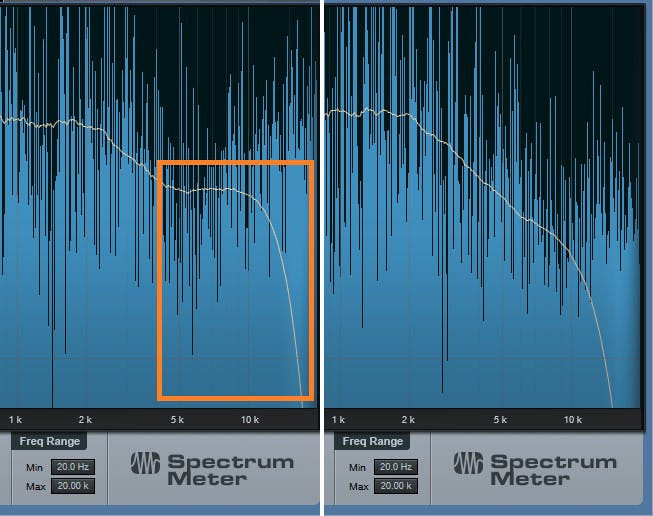
Figure 2: The image on the left is the 815 formulation with +5 dB of overbias. The high-frequency lift (outlined in orange) shows that presumably, the pre-emphasis EQ was increased to overcome the duller highs normally associated with tape (as when using the nom bias setting shown on the right).
Regarding distortion, with all three tape formulations at 15 IPS, distortion is most apparent at the +3 setting. At 7.5 IPS, distortion is most apparent with the 811 tape.
At 15 IPS, there’s a fairly mild low-frequency bump at 100 Hz, and a stronger one around 40 Hz; at 7.5 IPS, the 100 Hz bump shifts down to 50 Hz, while the 40 Hz low-frequency bump moves down almost out of the audible range, so be careful if your monitors don’t go down that low to make sure you’re not putting too much low-frequency energy onto your track. The conventional wisdom is to use 7.5 IPS on lower-frequency instruments, but there’s a reason why people liked that 15 IPS bump—try it on kick.
Regarding the track 2|3 switches, tape’s outer tracks were less consistent than the inner ones, due to the tape manufacturing process. (With 24-track tape, track 1 or 24 was often used for SMPTE time code, with the track next to it left blank, or used to record a sound where you could roll off the high frequencies to minimize SMPTE bleed-through.) But even with 4-track recorders, the inner tracks were slightly different, so Waves modeled the sound for tracks 2 and 3.
If you select tracks 2 and 3, the differences between the tracks will create a slightly wider image. Selecting both with the 888 formulation at 15 IPS puts me in vintage tape emulation nirvana—it’s big and open. However, you can also apply the characteristics of only one of the tracks if you don’t want altered imaging. This is mostly a factor when processing two-track masters, but you can hear a slight difference with a source like acoustic guitar mic’d in stereo.
Finally, let’s cover the extras. There are controls for wow, flutter and noise, which purists will appreciate for authenticity. They also allow for some very interesting FX tones when using the J37 for a more lo-fi effect. Saturation is a little different, because of the creative uses of distortion. This is different from the distortion obtained by smashing the input level harder.
You also have a complete tape delay section, which is great for classic tape slapback and echo effects. There are modes for an individual slap, feedback, or ping-pong delay in stereo; if you know how delays work, there are no surprises here. However, I greatly appreciate Waves departing from tradition to offer delay times up to two seconds, rather than limiting you to the two fixed delay times (for 7.5 IPS and 15 IPS speeds) inherent in physical tape machines. There are also high-pass and low-pass filters, which are useful for obtaining vintage tape echo sounds.
Kramer Master Tape
Although arguably not as flexible as the J37, that’s an advantage when you just want the “tape sound,” and don’t want to get lost in “is this setting better than that setting...I’m not sure I hear a difference.” I worked a lot with Ampex machines back in the day, and this plugin provides what they delivered. If you load the default preset, you’ll hear the tape sound that most people want, but let’s dig a little deeper.

Figure 3: Settings used to push rock bass into a more distorted sound, with less dynamics, so it jumps out more in a track.
At 15 IPS, there’s a bump around 50 Hz—great for EDM kicks. 7.5 IPS pushes the bump down an octave, which essentially takes it out of the range of consumer playback systems. Meanwhile, the flux control emulates how the tape head’s electromagnet imprints a pattern on tape at the tape head’s gap. Higher settings increase level, cut back on highs, and change the distortion character. Turning up the input control also pushes signals into the saturation range, but doesn’t affect the distortion sound’s character as drastically as increasing flux. Interestingly, at 15 IPS, the sound starts distorting a bit earlier than at 7.5 IPS. In either case, increasing the input leads to a smooth, linear increase in saturation. The bias options are normal or +3 dB of overbiasing. When overbiased, the response reveals less distortion and duller highs (as tested with a sine wave sweep and white noise)
Like the J37, there are wow, flutter and noise controls. Play a steady tone through the Kramer Master Tape and, as expected, the wow is random while the flutter is periodic. Go much past 60 though, and the flutter sounds more like synth vibrato. I find the range between 50 and 60 optimal for representing a reasonably well-maintained machine of that era. Like the original, the effect is subtle. You’re more likely to hear it on an individual track than a mixed one.
The delay section is simpler than the J37, offering delay time up to 500 ms, feedback and a lowpass filter. However, it still provides what you need for that “tape echo” sound.
One of the Master Tape plugin’s unique features is the monitor/repro switch. Repro gives the tape sound because you’re monitoring off the head. However, monitor is not a true bypass; it picks off the signal after the input tube stage but before any pre-emphasis/de-emphasis. This makes the Master Tape useful as a tube sound plugin, even if you’re not using the tape emulation aspects.
Working Practically
Both emulations have distinct personalities. The Master Tape nails it for individual tracks and has become my go-to saturation for rock bass (Fig. 3 above). It really can lift the bass out of a busy mix, as shown by the audio example below.
Guitar, drums, percussion, keys...pretty much anything works with it, and sometimes you can get away with a surprising amount of saturation when you want some dirt in your track but don’t want an obvious distortion effect. I don’t find much use for tape emulation with vocals, but that could be a personal taste thing, try it out for yourself before deciding. With drums, note that the Kramer Master Tape isn’t just about processing individual drums; mixed drum stems and drum loops respond really well (Fig. 4).

Figure 4: Settings used for the audio example that spotlights using the Kramer Master Tape on mixed drums.
Of course, the J37 can also process individual tracks. But where it excels for me is in adding the tape sound to two-track mixes. Part of this is because of the different tape formulations—if you can’t find the sound you want, you’re probably not trying hard enough.
However, some people believe that the Master Tape is best on mixes, and the J37 on individual instruments, which brings up an important point. Both plugins can change character radically with even the slightest parameter changes. For lack of a better term, these are “precision” plugins where a few degrees of control rotation can make the difference between something that sounds right and something that doesn’t.
Both plugins have unique talents, but to summarize, when you want to get dirty and give either individual tracks or masters some true grit, the Master Tape excels. If sophistication is more your style, particularly for mastering, the J37 provides more flavors and more options in a somewhat more polite package.
Audio Examples
- 0:00 /
- 01 - J37 Tape
Alternates every two measures, starting with no processing and ending with processing (16 measures total). Both the unprocessed and processed sections have the same peak level.
- 0:00 /
- 01 - Kramer Master Tape Drums
Alternates every two measures, starting with no processing and ending with processing (8 measures total). Note that both the unprocessed and processed sounds have the same peak level, but the Kramer audio example sounds much louder due to having a higher average level.
- 0:00 /
- 01 - Kramer Master Tape Bass
Alternates every two measures, starting with no processing on bass and ending with processing (16 measures total). Note how the tape processing “lifts” the bass out of a busy mix.
These examples are adapted from the song All Over Again (Every Day), which is posted on YouTube. This song also uses the Abbey Road Chambers on drums and vocals, the CLA-2A compressor/limiter on vocals and the L3 Maximizer for mastering. Copyright 2019 by Craig Anderton.
Tech Talk: Why Tape Emulation Is So Complicated
Tape always worked in conjunction with particular machines, and the two influenced each other. Tape recorder alignment was crucial in finding the “sweet spot” of low distortion, low noise and high-frequency response because you couldn’t optimize all three—there was always a tradeoff.
Tape recording is based on magnetism, and once something is magnetized, it tends to stay that way until demagnetized (if that wasn’t true, then hard disks wouldn’t remember anything). Feeding a constant, high-frequency AC signal to bias the tape into its most linear region mitigated this problem, but the “correct” bias setting was often subjective. High bias settings reduced distortion but could produce duller-sounding recordings. Low bias increased high-frequency response, at the cost of increased distortion. (Note that bias affected only the recording process, not playback. With emulations, the bias is adjusting what the track would sound like had it been recorded at a particular bias setting.)
Furthermore, pre-emphasis and de-emphasis equalization was part of the alignment process. This boosted treble going on to tape so that it could be reduced by an equal and opposite amount on playback, thus reducing hiss. However, no law said you couldn’t deviate from “equal and opposite.” For example, if you increased bias for lower distortion, you could choose to increase the pre-emphasis EQ to compensate for the duller sound. Ultimately though, any of these settings were always a moving target. You often had to re-calibrate both EQ and bias whenever you changed tape or needed to compensate for head wear.
Want more on tape emulation plugins? Get 13 essential tips for mixing with tape plugins here.
Want to get more tips straight to your inbox? Subscribe to our newsletter here.





